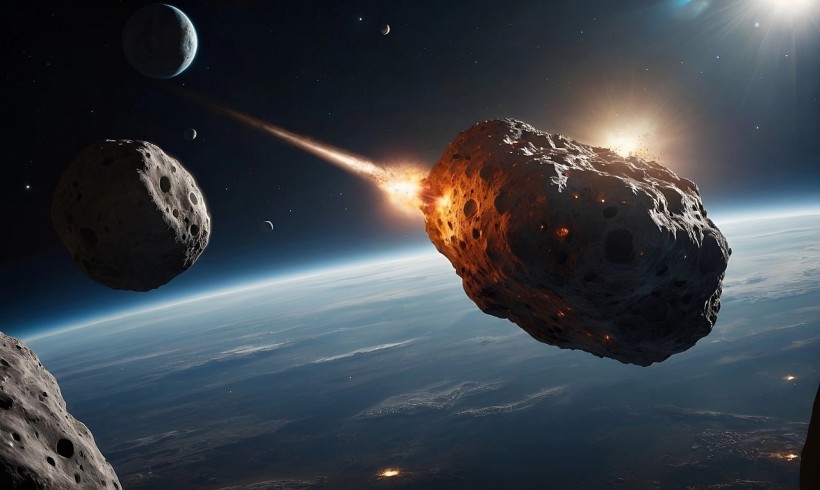An asteroid strike occurred in Germany's Berlin city as reported earlier this year, lighting up the night sky caused by the space rock's meteor blaze over the capital and Leipzig. However, scientists reported recently that the January 2024 space object that struck the German capital is the "fastest-spinning asteroid" ever recorded, maintaining its rate when it entered Earth's atmosphere.
Scientists estimated that the said asteroid, known as 2024 BX1, was spinning at the highest rate ever known, particularly at a speed of one spin every 2.6 seconds, based on reports. The object then fell into pieces over Berlin when it came to Earth on January 21.
Some of the fireball's fragments were collected in the area. Astronomers spotted the asteroid just 3 hours before it entered our planet.
Fastest-Spinning Asteroid

(Photo : Image by izhar ahamed from Pixabay)
Findings about 2024 BX1 being the fastest-spinning asteroid or fastest-rotating NEO were published in a research paper in the preprint database arXiv in April 2024. Scientists involved in the study have calculated the rotational speed of the Berlin asteroid, which exploded over the German city on January 21. They determined the speed by making trail in images of the sky at that time.
The research also confirmed that the Germany asteroid was rotating once every 2.6 seconds while traveling at an approximate speed of 31,000 miles per hour (50,000 kilometers per hour). During the asteroid strike event, there were no reported significant damage or casualties in Berlin or its surrounding areas. NASA was also able to give a warning, 95 minutes before the asteroid impact.
Asteroid Strikes
Asteroid strikes on Earth are more common than one might think, with more than 100 tons of dust and sand-sized particles bombarding our planet daily, according to the National Aeronautics and Space Administration (NASA). Yet, most of these space rocks and other meteoroids are relatively small. Still, astronomers are constantly monitoring the cosmos for dangerous asteroids.
Since larger space objects, including comets, can cause damage and loss of life once they hit us, NASA and other space agencies have recorded the trajectory of near-Earth objects (NEOs). In 2013, a meteor strike and explosion in Siberia, Russia, destroyed windows of establishments, injuring more than 1,000 people at that time. The meteor was a small asteroid, dubbed the Chelyabinsk meteor.
NASA estimates that each year, an asteroid the size of an automobile enters Earth's atmosphere, producing a meteor fireball that burns in the sky and disintegrates before reaching the planet's surface. Meanwhile, Earth is faced with a potential football-sized meteoroid every 2,000 years, which causes significant damage to an area.
However, an asteroid large enough to threaten Earth's civilization may occur once every few million years. This projection is based on impact craters on Earth, the Moon, and other planetary bodies, the US space agency adds. Due to this inevitable threat, scientists have been preparing for several planetary defense measures against asteroids and other meteoroids.
Related Article: Bennu Asteroid: There is 1 in 2,700 Chance Space Rock Could Hit Earth by the Year 2182
© 2024 NatureWorldNews.com All rights reserved. Do not reproduce without permission.





